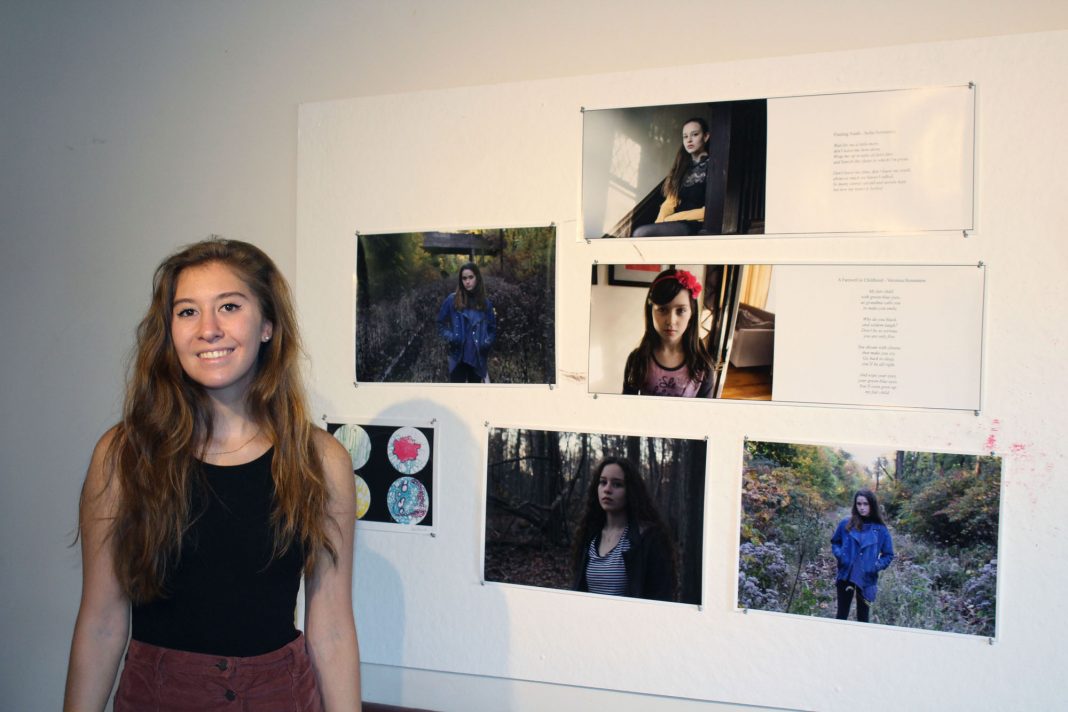Studio art major Sofia Horenstein ‘19 loves to be busy. With a concentration in photography and starting science classes to continue her education this year, Horenstein already has plenty of work, but chooses to continue being an active student. Throughout her studies at Muhlenberg, she has been a part of photography club, Phi Mu, Alpha Phi Omega, Art Day and this year will be at Shape it Up as well. A fan of community service, Horenstein has volunteered at Jefferson Field Day, Relay for Life and Winter Spectacular.Horenstein also participated in a triathlon this past summer and continues to stay active by working out and doing yoga.
When asked how she balances her crazy schedule, Horenstein simply stated that, “It’s been pretty manageable because I personally love studio art; it’s more relaxing for me. I’ve never been stressed out by an art class. I’ll start doing it and it’s a relief. It’s not like I’m in the library seven hours studying for biology and rewriting all my notes. It’s more like ‘I have this huge project due and I’m in my studio for four hours painting and sanding.’ Or making a watercolor, or taking pictures.”
One reason for Horenstein’s success is that she has a large background in the arts. Drawing from as early as she can remember, Horenstein has participated in regular and advanced art classes, after-school camps that involved subjects such as jewelry-making and print-making and summer intensives; until she settled into photography in high school. When she was starting college, however, art classes weren’t a part of her new schedule moving forward.
“I wasn’t originally planning on taking an art class my first semester, but changed all my classes after one week. I couldn’t handle sciences at that point because I knew I wouldn’t do well, and I wanted to keep my G.P.A high, so I took a year or two so I could do the sciences correctly. I switched to taking care of my gen-eds, and one of those was an art class,” Horenstein explained.
The first art class that she took remains as one of the hardest she has ever been enrolled in: Analog Photography. “Analog Photography is very chemistry based; you can mess up really easily. You have to position the image how it’s going to be on the paper because it uses a projection machine. You have to enlarge it and set the margins to the right size. I remember working 12 hours for each project.” One of the benefits, however, of taking Analog Photography was that Horenstein met one of her mentors, Professor Lydia Panas.
“She took photos of me two times for her projects. The nice thing about modeling for people is that it really helps you learn. I’m also a portrait photographer. It was a good experience so I could see how she handles her models,”
Horenstein said of Professor Panas. Panas, art advisor Emily Orzech and CUE (Culminating Undergraduate Experience) advisor Frederick Jones have led Horenstein towards the creation of her CUE project, which will combine many of the skills that she has learned at Muhlenberg.
Explaining her CUE project, Horenstein said, “I started out with the question: how do I represent the loneliness I felt growing up as an only child? That’s how I wanted to finish up my art experience, since I probably won’t be doing a ton of art post-grad. I wanted to do something really big, something I’ve never done before. I’m going to redecorate [a doll] house. I’m making the wallpapers myself, watercoloring and screen-printing them. They’re all going to be biological wallpapers. I have to redo it all, even lighting. It will be an installation in the CA at the end of the year. Some of the lights will be motion-activated.
People will go up to it, and some of the lights will turn on, some of them will be off. It goes with the conceptual thing about the feeling of loneliness, not feeling like I’m in a complete house.”
Look out for Sofia’s finished CUE project in the Center for the Arts, where it will be housed next semester.






















